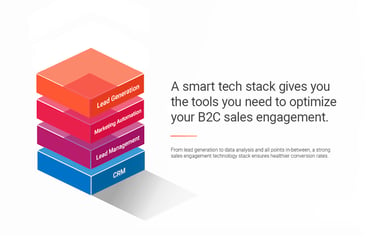Business Strategy Blog Tips
Blogging is a critical part of a modern marketing and sales program and provides a valuable resource to prospects and customers. To get the most out of blogging, blogs should be well written and formatted for the web. Here are some writing tips to simplify your blogging efforts.
Blogging works in several ways:
- It drives traffic to your website
- It builds trust with your leads
- It establishes authority on topics relevant to your business
- It makes search engines more likely to see your website as legitimate and increases your domain authority
Blogs should follow classical essay structure, intro - body - conclusion, but some unique formatting techniques make them function better as web content. The main thing to think about is scannability, or snack-ability (as in “snackable content”). In other words, blocks of information that are identifiable at a glance.

Example of Scannability
As illustrated here, you might add a heading or a paragraph break where you otherwise would not. It helps break up the content and makes it less intimidating to a busy blog visitor. Images help with this as well, but keep them relevant! Readers should be able to scan the content and pick out relevant passages and get a quick idea if it’s worth their time to read the full article.
Get Writing
Get all of your ideas down first. Don’t worry about writing it perfectly; write down all of your thoughts in a rough draft or outline. Then find other blogs or online resources about your topic - if you can find a blog about the same subject, compare yours and ask, “does my article measure up, surpass, add something to the conversation?” Add anything that’s missing and then cut anything redundant or irrelevant. Then go through and rewrite it. DO NOT plagiarize or paraphrase other blogs just to create content; the relevance of your content is critical, and you can’t always trust others' information to be accurate.
Subheadings
Subheadings are a great way to break up content and lay out clear ideas for the reader. They help the reader find relevant passages and give a quick reference point to the topics you write about. They can also help you organize your ideas. If you think of a classic numeric outline, blogs should fall between that format and a classical essay.
Tone
The tone of your blogs should always be friendly and helpful. Never condescending or sarcastic. Never assume that the reader is an idiot. DO assume that the reader is busy and doesn’t have time to decode your blog. Clear and concise ideas, explained simply, are best.
There are a number of apps like Hemingway that can help clarify your writing.
“Writing at a simple blog reading level isn’t to insult anyone’s intelligence; it simply helps make your point quickly, efficiently, and effectively. In fact, an eighth-grade reading level is recommended for most blogs. There’s room for style in writing, but substance is far more important. Even the great Harvard Business Review finds itself in the junior high and high school zone for stretches of its website.” - Shawn Badgley, Lantern
⇧(use external quotes to validate your position)⇧
Content
The content of your blogs should be helpful, usable information that people want to read and share with their colleagues. It should NOT be direct self-promotion or focused on your company, but rather, focused on the reader and valuable information that the reader can use. This blog is not about my company, it's about how you can improve your marketing with well-written blog content.
BE SURE TO ANSWER THESE QUESTIONS FOR THE READER:
- What does this have to do with me?
- How does this help me?
Open With a Strong Intro
The title and opening paragraph should guide the content that follows. Stick to the topic, don’t wander from the main topic, or the reader will get lost. The opening should tell the reader what value they will get from reading further, it should give them a good idea of the most valuable ideas in the blog - a quick summary of the key takeaways.
Body
The body is the bulk of the information. Explain the summary from the intro in greater depth.
Support your conclusions, don’t make opinionated statements without qualifying them - your voice should be authoritative and trustworthy.
Break up the body, and use subheadings and bullet points as necessary to keep it scannable and clear. Bullet points help readers quickly summarize action items or takeaways that they can use.
Subheading and Bullet Point Example:
Effective Blogging Tips
- Blogging works to help generate leads
- Create a compelling intro, body, and conclusion
- Inject some light humor and personality
- Use bite-size content chunks to break up the article
- Incorporate proof of your ideas, recommendations, etc. using a link to an authoritative site
Links
Ideas or terms that might not be universally understandable should link to supporting information. Wikipedia links are excellent for this. Four or five links in a blog help to increase engagement and support your ideas more broadly, giving them greater authority.
Where possible, links to other blogs that you’ve written or pages on your website are beneficial.
Conclusion
The easiest way to write the conclusion is to rephrase the intro. Pretty simple. Lock down the key points and reinforce the value of the topic.
For example, this blog’s intro is “Blogging is a critical part of a modern marketing and sales program and provides a valuable resource to prospects and clients.” So, in conclusion, I might say…
An effective blog is a key component in any modern sales and marketing program. A properly written blog will be a valuable resource to your prospects and customers, build trust, earn new customers and keep your old ones.




